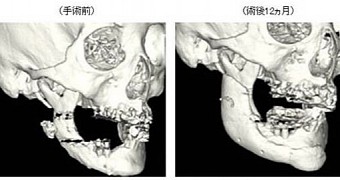The main benefit of 3D printed implants and prosthetics so far has been the ease of customization it allows for, completely eliminating all odds of discomfort that could arise from imperfect shaping and polishing.
And yet researchers from the university of Tokyo believe that this aspect of 3D printed bone replacements has been overemphasized.
It is their opinion that we should start treating 3D printed bones kind of like we do donated blood. Which is to say, we should start setting up bone banks. 3D printed bone banks that is.
That means that 3D printed bones should start being mass produced, from the hips and femurs to the vertebrae and jawbones. There are 206 bones in the skeleton of an adult human, so there's a lot to cover.
The outline of the plan
It cannot be denied that having a ready source of implants usable in reconstructive surgery and emergency trauma procedures could be invaluable to the activities of surgeons and trauma doctors.
The researchers from the University of Tokyo seem to have it all figured out. They have developed a technique that uses “bone ink” as filament, based on calcium phosphate.
Since that's the same substance found in original bones, there is virtually no chance of the implanted joint or bone to be rejected by the body.
In fact, the partial implants should even fuse with the natural bones eventually, reducing the chances of post-surgical complications massively.
Besides the medical benefits, the 3D printed bones also bring with them advantages in affordability and ease of creation.
Normally, to make a bone implant using the same materials, or others, needs them to be combined via sintering techniques at temperatures of almost 800°C. The high energy output is costly, and 3D printing eliminates that problem.
The issues with the plan
Performing a blood transfusion is not the same thing as transplanting a bone, or any other type of organ actually. In fact, it might be safer for a flesh organ to be transplanted than a bone, since they are soft tissue.
Hard body parts like bones can cause serious issues even if they are only slightly longer or wider than the original article. This issue only grows bigger when it's a joint you want to replace, or God forbid, a vertebra.
We can see something like a 3D printed bone bank being started, but only for partial implants that can be shaved / polished on the spot, rather than full bones.
Unless the ones spearheading the effort have the patience and meticulousness needed to create many, many categories of implants according to length, thickness, density, shape, etc. With how varied the height and girth of people are, it may be more trouble than it's worth. Especially since 3D printing is, by now, fast enough to create a proper, custom replacement almost on the spot anyway.

 14 DAY TRIAL //
14 DAY TRIAL //